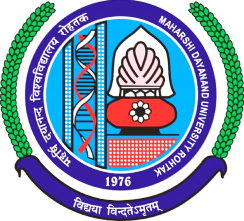Course Outcomes
Students would be able to:
CO1 Apply group theoretic reasoning to group actions.
CO2 Learn properties and analysis of solvable & nilpotent groups, Noetherian & Artinian modules and rings.
CO3 Apply Sylow's theorems to describe the structure of some finite groups and use the concepts of isomorphism and homomorphism for groups and rings.
CO4 Use various canonical types of groups and rings- cyclic groups and groups of permutations, polynomial rings and modular rings.
CO5 Analyze and illustrate examples of composition series, normal series, subnormal series.
- Teacher: Prof. Dalip Singh MDU
Course Outcomes
Students would be able to:
CO1 Be familiar with complex numbers and their geometrical interpretations.
CO2 Understand the concept of complex numbers as an extension of the real numbers.
CO3 Represent the sum function of a power series as an analytic function.
CO4 Demonstrate the ideas of complex differentiation and integration for solving related problems and establishing theoretical results.
CO5 Understand concept of residues, evaluate contour integrals and solve polynomial equations.
- Teacher: Prof. Dalip Singh MDU
Course Outcomes
Students would be able to:
CO1 Understand Riemann Stieltjes integral, its properties and rectifiable curves.
CO2 Learn about pointwise and uniform convergence of sequence and series of functions and various tests for uniform convergence.
CO3 Find the stationary points and extreme values of implicit functions.
CO4 Be familiar with the chain rule, partial derivatives and concept of derivation in an open subset of Rn.
- Teacher: Prof. Dalip Singh MDU
Course Outcomes
Students would be able to:
CO1 Understand the mathematical basis of probability and its applications in various fields of life.
CO2 Use and apply the concepts of probability mass/density functions for the problems involving single/bivariate random variables.
CO3 Have competence in practically applying the discrete and continuous probability distributions along with their properties.
CO4 Decide as to which test of significance is to be applied for any given large sample problem.
- Teacher: Prof. Dalip Singh MDU
Course Outcomes
Students would be able to:
CO1 Apply differential equations to variety of problems in diversified fields of life.
CO2 Learn use of differential equations for modeling and solving real life problems.
CO3 Interpret the obtained solutions in terms of the physical quantities involved in the original problem under reference.
CO4 Use various methods of approximation to get qualitative information about the general behaviour of the solutions of various problems
- Teacher: Prof. Dalip Singh MDU

